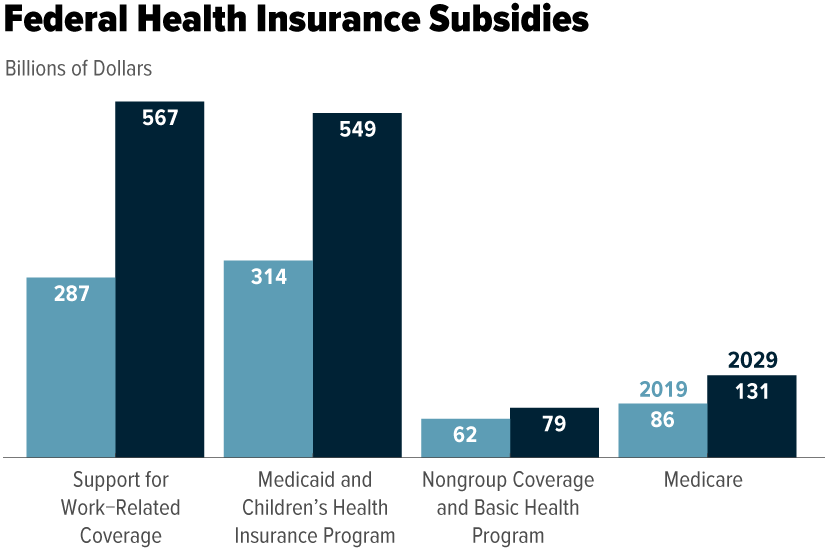Universal health protection implies that all people have access to the health services they need, when and where they require them, without financial hardship. It includes the full range of important health services, from health promotion to prevention, treatment, rehabilitation, and palliative care. Presently, a minimum of half of the people in the world do not receive the health services they need.
This should change. To make health for all a truth, we need: people and communities who have access to high quality health services so that they look after their own health and the health Additional info of their families; experienced health workers supplying quality, people-centred care; and policy-makers committed to buying universal health coverage.
Good health systems are rooted in the neighborhoods they serve. They focus not just on avoiding and dealing with illness and illness, but also on helping to improve wellness and quality of life. what is fsa health care.
Universal health care is a system that supplies quality medical services to all citizens. The federal government offers it to everybody no matter their capability to pay. The large cost of offering quality healthcare makes universal healthcare a big expenditure for governments. A lot of universal health care is moneyed by basic earnings taxes or payroll taxes.
However its health shipment system does have particular elements, such as Medicare, Medicaid, and the Department of Veterans Affairs, that offer universal healthcare to specific populations. Decreases general healthcare expenses: The federal government manages the rates through negotiation and regulation. Decreases administrative expenses: Doctors only deal with one federal government agency.
physicians spend four times as much as Canadians handling insurance provider. Forces hospitals and physicians to supply the exact same standard of service at a low cost: In a competitive environment like the United States, health care companies need to likewise concentrate on profit. They do this by offering the most recent innovation.
6 Easy Facts About What Is Home Health Care Explained
They attempt to complete by targeting the wealthy. Creates a healthier labor force: Studies show that preventive care reduces the requirement for costly emergency clinic use. Without access to preventive care, 46% of emergency clinic clients went due to the fact that they had no other place to go. They used the emergency room as their medical care doctor.
Early youth care avoids future social costs: These include criminal offense, welfare dependence, and health problems. Health education teaches households how to make healthy way of life options, avoiding chronic illness. Federal governments can impose guidelines and taxes to guide the population toward much healthier choices: Regulations make unhealthy options, such as drugs, prohibited. Sin taxes, such as those on cigarettes and alcohol, make them more costly.

The sickest 5% of the population create 50% of overall health care expenses, while the healthiest 50% just create 3% of costs. Individuals have less monetary incentive to stay healthy: Without a copay, individuals may overuse emergency situation spaces and physicians. There are long wait times for optional procedures: The government focuses on offering fundamental and emergency situation healthcare.
Health care expenses. For example, some Canadian provinces invest almost 40% of their budget plans on healthcare. with a low possibility of success. This consists of drugs for unusual conditions and costly end-of-life care. In the United States, look after clients in the last six years of life makes up one-fourth of the Medicare budget.
Standardizes service. Produces a much healthier workforce. Avoids future social costs. Guides people to make healthier options. Downsides Healthy individuals spend for the sickest. Individuals have less monetary incentive to remain Alcohol Detox healthy. Long haul times. Physicians might cut care to reduce costs. Healthcare costs overwhelm federal government spending plans. The government may restrict services that have a low probability of success There are three universal health care designs.
Countries typically combine universal health protection with other systems to present competition. These options can reduce expenses, expand option, or improve care. Citizens can also choose for better services with supplemental personal insurance. The United States uses different models for populations such as the elderly, veterans, and low-income people. In a single-payer system, the federal government offers free health care paid for with revenue from earnings taxes.
Getting The How Is Canadian Health Care Funded To Work
Every person has the same access to care. This is called the Beveridge Model. When governments supply healthcare, they work to ensure doctors and medical facilities offer quality care at a reasonable expense. They should collect and examine information. They can likewise use their purchasing power to influence healthcare companies.
Other countries include Spain, New Zealand, and Cuba. The United States provides it to veterans and military workers with the Department of Veterans Affairs and the militaries. Countries that utilize a social health insurance design needs everybody to purchase insurance, usually through their employers. The taxes go into a government-run health insurance fund that covers everyone.
The federal government controls medical insurance prices. It also has a great deal of clout to manage the private-providers' rates. Germany established this system. France, Belgium, the Netherlands, Japan and Switzerland likewise utilize it. The U.S. Obamacare system also needs insurance coverage, however there are many exemptions. It is likewise comparable because it provides subsidies to medical insurance companies for low-income enrollees.
Every person pays into the Click here to find out more nationwide insurance strategy. Administrative expenses are lower due to the fact that there is one insurance coverage business. The government has a great deal of take advantage of to force medical expenses down. Canada, Taiwan, and South Korea use this design. The U.S. Medicare, Medicaid, and TRICARE systems likewise utilize this design Australia has a combined health strategy.
Everyone gets coverage. People should pay deductibles before federal government payments start. Lots of citizens are prepared to spend for extra private health insurance coverage to get a higher quality of care. Government guidelines safeguard seniors, the bad, children, and rural homeowners. In 2018, healthcare cost 9. 3% of Australia's gross domestic product.
The per capita expense was US$ 5,005, about average for developed nations. There were 42. 6% of patients who reported a wait time of more than 4 weeks to see a professional. Australia had one of the best baby mortality rates of the compared countries at 3. 1%. Canada has a national health insurance coverage system.
Some Known Facts About Countries Whose Health Systems Are Oriented More Toward Primary Care Achieve:.
Private additional insurance coverage spends for vision, oral care, and prescription drugs. Hospitals are publicly moneyed. They provide free care to all citizens despite their capability to pay. The government keeps medical facilities on a fixed spending plan to manage expenses, however repays medical professionals at a fee-for-service rate. In 2018, healthcare cost 10.
The cost per person was US$ 4,974. A tremendous 62. 8% of clients waited more than 4 weeks to see a professional. The baby death rate was 4. 3%, among the nations compared. France has a social medical insurance system that offers care to all legal locals. That includes healthcare facilities, medical professionals, drugs, and some dental and vision care.
Of that, payroll taxes fund 64%, income taxes spend for 16%, and 12% is from tobacco and alcohol taxes. In 2018, health care expense 11. 2% of GDP. That was US$ 4,965 per individual. Half of all patients reported a wait time of more than four weeks to see a specialist.
